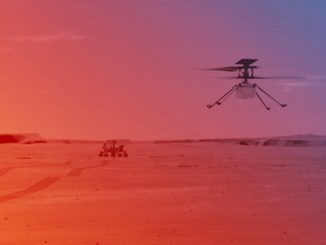
A joint U.S.-European satellite mission that measured rising sea levels for 11 years is ending due to the deteriorating condition of the spacecraft’s power system, officials said Friday.
The Jason 2 satellite was designed to operate for three to five years, but it outlived its design life and continued collecting precise sea level measurements through the launch of a replacement spacecraft — Jason 3 — in January 2016.
During its 11-year mission, Jason 2 charted nearly 2 inches (5 centimeters) of global sea level rise, an observation scientists attribute to a rise in average global temperatures.
“Today we celebrate the end of this resoundingly successful international mission,” said Thomas Zurbuchen, associate administrator of the NASA science mission directorate. “Jason-2/OSTM has provided unique insight into ocean currents and sea level rise with tangible benefits to marine forecasting, meteorology and our understanding of climate change.”
Ground teams noticed signs of aging from the Jason 2 satellite in 2017, and officials ordered controllers at NOAA’s satellite operations center in Maryland to command the spacecraft to move out of its original 830-mile-high (1,336-kilometer) science orbit to a slightly lower altitude away from other operational missions.
Jason 2 also depleted excess propellant reserves in 2017, but the satellite continued collecting scientific data. The lower orbit meant Jason 2’s measurements of the same location on the ocean were less frequent, but the resolution of the data improved, allowing scientists to conduct marine gravity studies and map seafloor topography, officials said.
The Jason 2 satellite, also called the Ocean Surface Topography Mission, launched June 20 aboard a United Launch Alliance Delta 2 rocket from Vandenberg Air Force Base, California.
Jason 2 was a joint mission developed and funded by NASA, NOAA, the French space agency CNES, and Eumetsat, which owns and operates European weather satellites.

Issues with Jason 2’s power system in recent weeks prompted mission managers to “passivate” the spacecraft and end the mission in order reduce the risk of the satellite becoming a source of space junk. Jason 2 ended scientific observations Oct. 1, and the satellite will be decommissioned Oct. 10, officials said in a statement.
“With the recent degradation of the spacecraft’s power system, mission partners decided to end the mission to decrease risks to other satellites and future altimetry missions, and to comply with French space law,” the mission partners said in a statement.
The mission cost $432 million in 2008 economic conditions. About 60 percent of the funding came from Europe for construction of the satellite and its primary radar instrument, and 40 percent came the U.S. government to pay for Jason 2’s launch on a Delta 2 rocket, a part of the satellite’s science payload, and mission operations.
“Jason-2/OSTM was a high point of operational satellite oceanography as the first Jason mission to formally include Eumetsat and NOAA as partners,” said Steve Volz, assistant administrator of NOAA’s satellite and information service. “During its 11-year run, Jason-2/OSTM helped improve NOAA’s hurricane intensity forecasts and provided important observations of marine winds and waves and in doing so has anchored these essential ocean altimetry observations in NOAA’s operational observing system requirements.”
During its mission, Jason 2’s Poseidon 3 instrument bounced radar beams off the ocean surface and measured the precise distance by determining the time it took for the reflected radio waves to be received by a sensor on the spacecraft.
Jason 2 was the third in a series of satellite missions developed by French and U.S. science agencies. The Topex/Poseidon spacecraft launched in 1996 and ceased observations in 2005. Jason 1 launched in 2001, and ground controllers lost contact with it in 2013 after it suffered a transmitter failure.
“Not only did Jason 2 extend the precise climate record established by Topex/Poseidon and continued by Jason 1, it also made invaluable observations for small to medium-scale ocean studies in its second, interleaved orbit,” said Jean-Yves Le Gall, president of CNES. “Even when moved to the ‘graveyard’ orbit, Jason-2 continued to make unprecedented new observations of the Earth’s gravity field, with precise measurements right until the end.”
The Sentinel 6A satellite, a replacement for the still-operating Jason 3 mission, is being tested in Europe in preparation for launch in November 2020 from Vandenberg Air Force Base aboard a SpaceX Falcon 9 rocket.
Email the author.
Follow Stephen Clark on Twitter: @StephenClark1.



